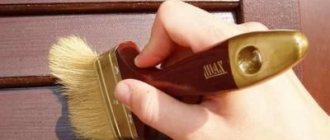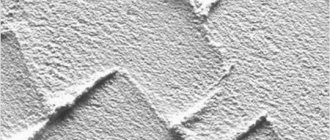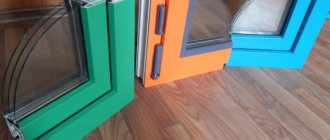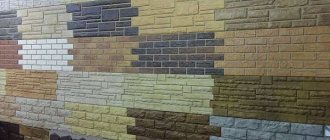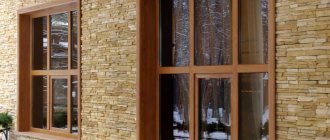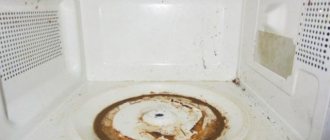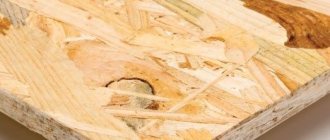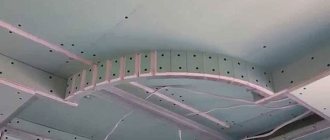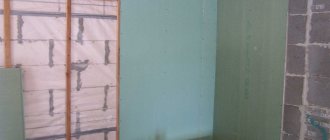Application area of sealant
This substance is a paste containing polymer compounds. There are several types of sealant, differing in composition and characteristics, but they have the same basic properties: plastic when extruded, they harden in air, creating a reliable heat-insulating and moisture-proof layer. The seam, made using white sealant, is invisible against the background of the slopes and the frame of the double-glazed window.
These qualities, complemented by good adhesion to different surfaces, have made sealants indispensable for sealing cracks formed after the installation of plastic windows.
Choosing sealant for windows - overview of types
When installing new plastic structures, installers often poorly seal the joints where windows meet slopes, window sills meet windows, or do not seal them at all. And most window companies do not install slopes at all, so homeowners make slopes themselves. Then the need arises to seal the cracks with one of the sealing compounds. For this purpose, it is best to use sealant for plastic windows. It is used to seal slopes made of plastic panels, and is also used to fill voids between the frame and the window sill.
Acrylic sealant
Mainly used for external seams: after drying, acrylic, which has high adhesion to surfaces of any material, forms a porous structure. Inside the building, it will absorb fumes and darken over time. The problem can be solved by painting the seam, but still there are more suitable compositions for interior work.
Pros of acrylic sealant:
- fits well even on damp substrates, on top of polyurethane foam;
- not afraid of moisture and sunlight;
- excess is easily removed;
- harmless, does not require protective equipment during operation;
- frost-resistant;
- Can be painted or plastered without any problems.
Flaws:
- after a few months it loses its whiteness, turns yellow or gray;
- washed off with water.
Which composition to choose?
As a rule, different types of sealants are selected for external and internal work. A simple algorithm will help you avoid making the wrong choice.
Sealant selection algorithm
- Decide on the location of the seam (indoors or outdoors). Outdoors, it is better to use silicone or acrylic (but at the same time, it will have to be coated with an antifungal compound) sealant. Acrylic sealant is ideal for sealing joints indoors.
- Selecting the color of the sealant or paint for it.
- Selecting weather conditions that correspond to the weather conditions specified by the manufacturer.
Also, useful tips on choosing a sealant for internal sealing of seams - see below:
Thiokol (polysulfide) sealant
A two-component composition with good viscosity and fluidity. Easy to use, penetrates into the smallest cracks and seals them. By adding different amounts of hardener, you can adjust the rate of hardening from several hours to several days. Professionals prefer to use it at the junction of tides. It is allowed to use thiokol sealant at sub-zero temperatures, which allows work to be carried out in the cold season.
Advantages of thiokol composition:
- lasting;
- resistant to chemically active substances;
- not afraid of sunlight, high and low temperatures (operating range - from -50 °C to +130 °C);
- has low moisture and vapor permeability.
USEFUL INFORMATION: Plastering window slopes with your own hands
The only drawback is the high price.
At what temperature to use
For each type of sealant, the manufacturer determines the application temperature and operating temperature. Silicone and acrylic sealants can be used at temperatures from +5 to +40 C.
Temperature conditions of different types of sealants:
- Acrylic. Its operating temperature range is from -20 to +70 C
- Silicone . Withstands temperatures from -60 to +300 C.
- Polyurethane. Can be used at temperatures from -55 to +80 C.
- Alkyd (STIZ A, STIZ B). Retain their physical and chemical properties at temperatures from -60 to +80 C
- Polymer sealants. They do not collapse in the temperature range from -55 to +130 C.
Source
Polyurethane sealant
It is a sealing compound with an adhesive function. Successfully glues surfaces made of concrete, plastic, wood, metal and brick. It has a lot in common with polyurethane foam: a few seconds after it gets into a humid environment, it hardens to a solid state. Can be used both indoors and outdoors.
Advantages of polyurethane sealant:
- not afraid of moisture, vibrations;
- has the best elasticity compared to other compounds;
- characterized by good adhesion to different surfaces and excellent self-adhesion;
- resistant to ultraviolet radiation and low temperatures (up to -50 °C);
- suitable for work in winter;
- tolerates painting and varnishing well;
- does not shrink;
- safe;
- durable, long lasting.
One point can be attributed to the disadvantages: polyurethane sealant hardens very quickly, so it must be applied carefully.
Butyl sealant
Thermoplastic composition based on polyisobutylene, the consistency resembles rubber. Suitable for sealing windows, sealing cracks in double-glazed windows indoors and outdoors. But for processing the joints of slopes and frames, it is better to choose a different composition.
Pros of butyl sealant:
- durable, plastic;
- vapor-tight;
- Suitable for use on metal, plastic, glass and rubber surfaces;
- repels moisture;
- safe;
- excess composition is easily removed;
- has a long service life - up to 20 years.
Minuses:
- narrow scope of application;
- has a black or gray color.
Silicone sealants
A universal composition with organosilicon compounds, used to seal cracks from the inside and outside. Inexpensive, easy to use. Before application, the surface must be cleaned of contamination: this will increase the adhesion of silicone. Due to its high elasticity, it completely fills even minor cracks and cavities. Does not change its color over time, prevents the appearance of mold and mildew. Popular for interior work.
There are 2 types of silicone-based sealants available:
- Acid (acetate). Can be used on any smooth substrates. Not suitable for stone and metal as it reacts with them. It has weak adhesion to concrete and gypsum, low adhesion to plastic. After application it smells a little like vinegar, but the smell dissipates quickly.
- Neutral. Ideal for metal surfaces, non-corrosive, suitable for high humidity conditions. Used to fill expansion joints. Adheses well to plastic and glass, interacts well with concrete surfaces. Costs more than acidic.
USEFUL INFORMATION: How to putty the slopes on windows?
Advantages of silicone composition:
- has increased elasticity;
- moisture resistant;
- tolerates high and low temperatures well (from -30 °C to +60 °C).
Flaws:
- cannot be painted;
- gives a slight shrinkage;
- acid sealant peels off over time, which requires a complete renovation of the seam;
- The peeling film may make a whistling sound when the wind blows through the window.
Kinds
The sealing composition for windows is divided according to several main parameters. First of all, they are divided into specialized and for mass use in everyday life. Professional compounds are used for gluing glass to a PVC base. Their main task is to prevent moisture from entering the interframe spaces, which contributes to the formation of condensation. This type of mounting compound is used in production, directly at the time of assembly of the structure. This sealant can only be used in conditions of ultra-high temperatures of about +100°C.
The second group includes compounds that are widely available in retail sales. They differ in different chemical compositions and are intended for interior and exterior construction work. Manufacturers offer a large number of materials, each of which has its own characteristics.
The compositions are divided according to the type of main polymerizing component:
- Silicone.
- Acrylic.
- Thiokol.
- Polyurethane.
- Acrylate.
Silicone sealants
The compositions are made on the basis of organosilicon silicone polymers. They have an optimal consistency, are easy to apply to the surface, and have good adhesive properties. Today, this is the most common group of window sealants. They seal cracks inside and outside plastic windows and are successfully used on other surfaces.
The main advantages of silicone composition include:
- Absolutely waterproof. Silicone does not deteriorate under prolonged exposure to large amounts of precipitation in the off-season. He is not afraid of rain, snow, hail, or icing. If you don’t know what sealant to use to seal cracks in plastic windows on the street side, we recommend choosing this type.
- Resistance to ultraviolet radiation. The sun's rays have an aggressive effect on any sealing compounds for outdoor use. Over time, the layer cracks, which leads to depressurization of the glass unit. Silicone is not afraid of UV radiation and lasts quite a long time.
- High plasticity. After hardening, the mass becomes quite strong, while remaining elastic. The structure can expand and contract throughout the year under the influence of temperatures, but the integrity of the insulating layer will not be compromised.
- Resistance to aggressive environments. Silicone is not susceptible to infection by fungi and is not destroyed by mold growth.
- Good adhesion. The range of application of silicone-based sealant is quite wide. It seals well the joints of windows with tiles, concrete walls, wood, and plastic. Silicone sealant will be the best option when restoring old wooden windows.
- Large selection of colors. To connect seams in conventional PVC structures, it is recommended to use colorless mounting material. It is better to seal seams in laminated windows with colored (painted) silicone sealant.
When choosing, you should consider the following disadvantages of silicone mounting materials:
- Harmful chemical composition. During work, you should observe safety regulations and thoroughly ventilate the room until it completely hardens. In subsequent use, silicone sealant is absolutely safe and does not emit volatile substances.
- Corrosive properties. During contact with unpainted metal, the sealant releases acids, which cause a slight rusting process.
- Vapor tightness. After cooling, the silicone does not allow a drop of moisture to pass through. At the junction of the window and the outer wall, it is better to use other types of materials that do not disturb the air exchange process in the house.
- Requires careful application. When dry, thin layers of silicone peel off from the plastic and hang in unaesthetic rags. Attempts to remove them may lead to depressurization of the seam.
- Silicone is not suitable for painting. In order not to disturb the overall composition, it is necessary to immediately select the composition of a suitable color.
Silicone sealants are available for retail sale in plastic syringe tubes, packaged about 300 ml. If necessary, you can purchase the mass in tubes of smaller volume.
On video: how to work with silicone correctly
Acrylic sealants
The most affordable insulating material. It is quite versatile and can be used on any type of surface.
Among the advantages of acrylic sealant are:
- Good adhesive ability. It adheres well to wood, glass, plastic and metal, and is well suited for indoor work. It has proven itself to be excellent when installing internal slopes made of plasterboard.
- Paints well. Acrylic can be painted with any type of paint. Most often it goes on sale in white and is decorated after cooling.
- No harmful odors. Absolutely safe for health and does not emit toxic substances during installation.
A significant disadvantage of acrylic sealants is its low ductility. After hardening, it becomes very hard and can crack when the structure is deformed. In regions with extremely low temperatures in winter, it cracks in the cold, which leads to depressurization of the window. It gives a fairly high level of shrinkage and requires use in large quantities.
Thiokol sealants
Two-component polysulfide-based thiokol sealants are convenient in that the builder can independently regulate the degree of hardness of the composition. This is achieved by adding a hardener in one proportion or another. The amount of the last component directly determines the period of hardening of the composition on the surface.
The main advantage of the polysulfide composition is its high degree of frost resistance. The material has proven itself well in very low temperatures. Most often it is used to process the joints between the base of the window and the metal cast. The mixture is quite plastic and can withstand temperatures ranging from -48°C to +128°C. It goes on retail sale in plastic buckets with a volume of 1 to 10 kg. A significant disadvantage of the material is its very high price.
Polyurethane sealant
Universal construction installation insulator for sealing windows from the outside and inside. It has excellent adhesive properties and easily glues materials with any texture: glass, PVC, metal, cement, brick. It hardens instantly after use and reacts well to coloring with any type of coloring composition.
Has good characteristics:
- Resistant to moisture, UV rays, frost.
- Durable and elastic.
- Does not shrink significantly.
- Adheses well to the surface.
Available in sealed containers with a removable plastic tip.
Acrylate sealants
The most durable type of installation sealants for external and internal work when installing PVC windows. The mixture is packaged in plastic buckets of various sizes, plastic film or cylinders with a plastic tip. The composition can be applied with a spatula or using a pneumatic gun. After drying, the surface lends itself well to rubbing, which is especially important when insulating slopes.
A distinctive feature of acrylate sealants is their high level of frost and moisture resistance. The material can be applied at a temperature of -10°C on a dry or damp surface.
There are 2 types of acrylate sealants available for sale:
- "Stiz A" is a vapor-permeable material for external work on slope insulation.
- "Stiz V" is a vapor-permeable material for interior work on decorating slopes.
Polymer sealant (liquid plastic)
It consists of dissolved PVC granules. Indistinguishable from the material of a window block, it combines a plastic slope with a frame into a monolithic structure. It is more expensive than silicone-based analogues. The most popular brand is Cocmofen.
Advantages of liquid plastic:
- easy to apply;
- hardens quickly;
- lasts 15 years without changing color;
- safe;
- resistant to ultraviolet radiation and other atmospheric influences.
Minuses:
- does not tolerate tensile or compressive loads (after hardening, the composition does not have elasticity);
- Suitable only for plastic slopes.
Acrylate sealants
They are used for making external and internal assembly seams when installing plastic windows. There are two most famous formulations on sale, which complement each other - “Stiz A” and “Stiz B”.
Pros of acrylate sealants:
- the compositions can be applied at sub-zero temperatures;
- have good adhesion to concrete, plastic, wood, brick surfaces, aluminum profiles;
- UV resistant;
- applied in any convenient way - spatula, brush, syringe, gun.
"Stiz A"
A vapor-permeable sealant intended for sealing seams between the opening and a window or balcony block on the outside of a building in accordance with GOST 30971. The vapor permeability of the outer layer is necessary so that moisture from the polyurethane foam is removed outside and the thermal insulation properties of the material are not reduced.
Important! “Stiz A” is suitable only for external seams; for internal seams, “Stiz B” sealant is used.
"Stiz B"
Vapor barrier acrylate sealant for the seam between the slopes and the window block indoors. Prevents moisture and steam from entering the seam from the room. Used in combination with the composition "Stiz A".
Technology of use
In addition to sealant, when sealing cracks you will need:
- A special gun that makes it convenient to squeeze the solution out of the tube.
- Masking tape. Most sealants can be easily removed with water until they have hardened. But it’s worth additionally protecting the frames and slopes from getting hit.
- Sponge and container with water.
Preliminary preparation consists of cleaning the surface and crevices from dirt. Dust, grease, remnants of protective film - all this will reduce the adhesion of the material. When wet cleaning, time is allowed for the surface to dry. Masking tape is applied along the contour of the cracks to be sealed.
Important! Plastic elements - window frames, sandwich panels, window sills - cannot be degreased with acetone-based solvents. There will be stains and stains on them.
Sealant application technology:
- Holding the syringe with the composition at an acute angle, carefully fill the gaps. At the same time, the nose of the syringe smoothes the seam.
USEFUL INFORMATION: Multifunctional glass: what is it
- We wet our finger in water and form the seam completely, making sure that the sealant completely fills the space between the frame and the slope. You can easily clean your finger from the sealant with a simple napkin.
- Use a wet sponge to carefully remove excess. At the same time, we must not damage the integrity of the seam, so we wash and wet the sponge more often.
- We seal the window in parts to prevent the sealant from hardening before the seam is formed. First, we perform operations on one section of the window, and after completing the entire cycle of work, we move on to the next one. This way the seal will be of high quality.
- We pay special attention to the cleaning stage: forgotten drops of solution will darken over time and spoil the appearance of the window opening, and removing them in a frozen state is problematic.
Note! The technology for applying liquid plastic is different. The composition is squeezed out in an even strip; it cannot be smeared or rubbed into the seam.
Do-it-yourself grouting and sealing of windows
Do-it-yourself grouting and sealing of windows
Grouting of joints on window openings is usually done by specialists immediately after the installation of PVC structures. However, sometimes you have to do this on your own, because not everyone resorts to the help of workers. Many people install windows or slopes without contacting builders, so in such cases they also have to grout the seams without unnecessary help.
In addition, after several years, the old material loses its properties, so the cracks will have to be processed again. But first, it’s worth understanding the types of compounds that serve such purposes and analyzing their qualities that are suitable for a particular case.
Types of materials and results
Liquid plastic
Liquid plastic is most often used to fill cracks and seams between the frame, slopes and window sill. This composition is widely used among professionals. Available in a tube or as a cartridge for a pistol. The color of liquid plastic can be white or transparent.
The kit usually includes a special nozzle that allows you to apply the strip into the seam as thinly as possible. One of the well-known brands that produce these materials is Cosmofen.
After drying, the mass becomes hard, resembling plastic.
Silicone sealant
Silicone sealant is also a means for grouting joints, but many reject its candidacy because of its elasticity. In fact, softness after drying will not affect the performance in any way, so you can safely use it.
By the way, after several years of service, such material can be easily removed from the surface of the window sill and slope panels. This line of products has many shades, so this material is perfect for the owner of textured and colored windows.
Acrylic sealant
Acrylic sealant also has a wide color palette, but the classic white color is also available in almost every store. After drying, it becomes more rigid, but not as hard as liquid plastic. It has a lower percentage of elasticity, but this is its advantage for many buyers. You can also use this product, but it is better to choose from sanitary representatives with special additives. Well-known and high-quality sealants: “Tytan”, “VGT”, “Makroflex”, “Moment”, etc.
Adhesive/cold welding
Adhesive/cold welding can also be used to seal seams on window units, but their properties differ from sealing materials. These compounds glue one part to another, which eliminates the possibility of their easy replacement if they lose their properties after some time. At the same time, the slope panels may be slightly deformed when the cold weld dries, despite the fact that it was originally intended for PVC; this occurs due to the strong adhesion, given that the panel and frame are perpendicular to each other, creating an angle of 90 degrees.
You can purchase any of the above products, but the results will be different, so you must initially decide which product is more suitable in a particular case.
Preparation and application of sealing material
It doesn’t matter what grout material is chosen, in any case you need to prepare the following:
- sealant or liquid plastic;
- container with water;
- a towel or piece of fabric (rags - BUT! clean);
- degreaser;
- latex gloves (optional);
- gun.
